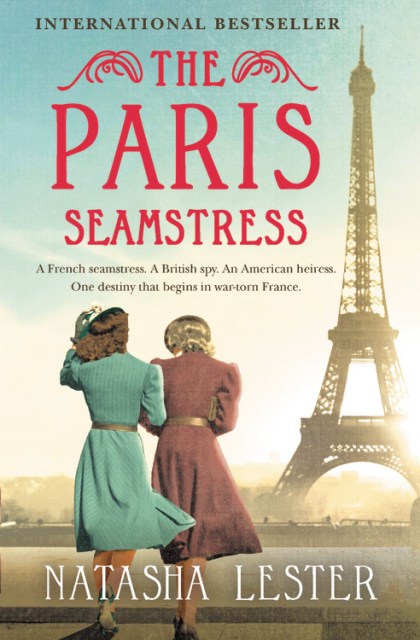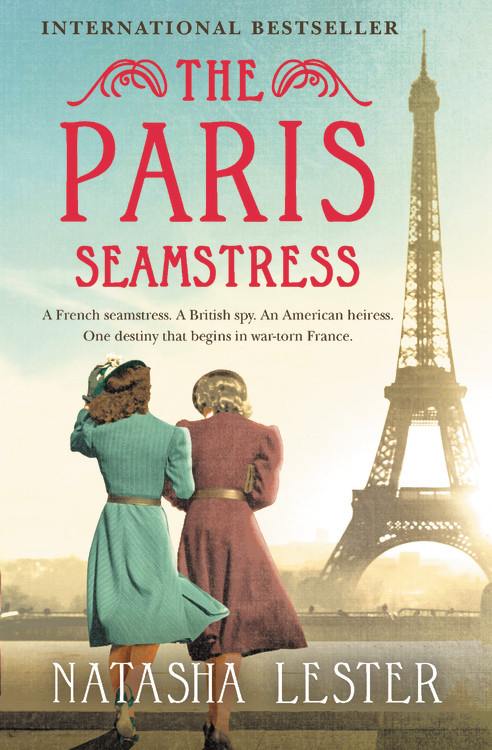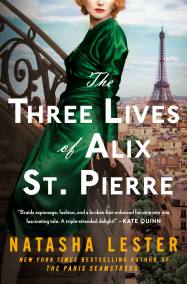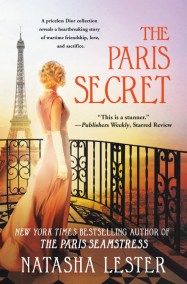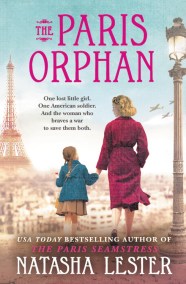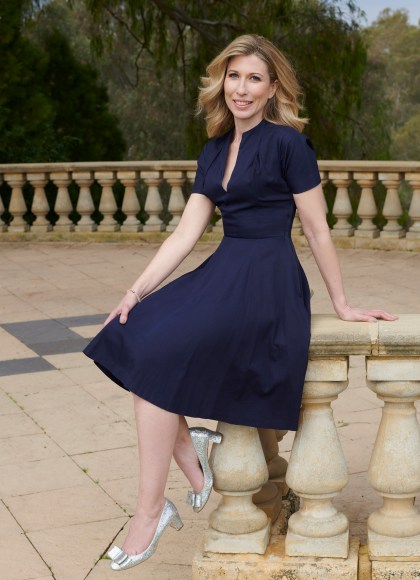Promotion
Use code BEST25 for 25% off storewide. Make sure to order by 11:59am, 12/12 for holiday delivery!
By clicking “Accept,” you agree to the use of cookies and similar technologies on your device as set forth in our Cookie Policy and our Privacy Policy. Please note that certain cookies are essential for this website to function properly and do not require user consent to be deployed.
The Paris Seamstress
Contributors
Formats and Prices
- On Sale
- Sep 18, 2018
- Page Count
- 464 pages
- Publisher
- Forever
- ISBN-13
- 9781538714775
Price
$14.99Price
$19.49 CADFormat
Format:
- Trade Paperback $14.99 $19.49 CAD
- ebook $9.99 $12.99 CAD
- Audiobook Download (Unabridged)
This item is a preorder. Your payment method will be charged immediately, and the product is expected to ship on or around September 18, 2018. This date is subject to change due to shipping delays beyond our control.
Buy from Other Retailers:
For readers of Lilac Girls and The Nightingale comes an internationally bestselling World War II novel that spans generations, crosses oceans, and proves just how much two young women are willing to sacrifice for love and family.
1940: As the Germans advance upon Paris, young seamstress Estella Bissette is forced to flee everything she’s ever known. She’s bound for New York City with her signature gold dress, a few francs, and a dream: to make her mark on the world of fashion.
Present day: Fabienne Bissette journeys to the Met’s annual gala for an exhibit featuring the work of her ailing grandmother – a legend of women’s fashion design. But as Fabienne begins to learn more about her beloved grandmother’s past, she uncovers a story of tragedy, heartbreak and family secrets that will dramatically change her own life.
“I loved The Nightingale by Kristin Hannah and I have a feeling that I’m going to love this dual timeline World War II novel based in war-torn France and present day.” –Debbie Macomber
“This rich, memorable novel unfolds beautifully from start to finish.” —Publishers Weekly
“Fascinating and impeccably researched.” — Gill Paul, author of The Secret Wife
“A fantastically engrossing story. I love it.” — Kelly Rimmer, USA Today bestselling author
“Gorgeously rich and romantic.” — Kate Forsyth, author of Bitter Greens
“Intrigue, heartbreak… I cannot tell you how much I loved this book.” — Rachel Burton, author of The Things We Need to Say
“If you’re looking for a swoon-worthy romance, then The Paris Seamstress is for you. Natasha Lester’s novel features not one but two love stories, spanning continents and centuries…Fans of historical romance will eat this one up.” — Refinery29
“Combine family secrets, World War II, tragedy and heartbreak and you have the compelling ingredients of this month’s book buyer’s pick.” — Costco Connection
1940: As the Germans advance upon Paris, young seamstress Estella Bissette is forced to flee everything she’s ever known. She’s bound for New York City with her signature gold dress, a few francs, and a dream: to make her mark on the world of fashion.
Present day: Fabienne Bissette journeys to the Met’s annual gala for an exhibit featuring the work of her ailing grandmother – a legend of women’s fashion design. But as Fabienne begins to learn more about her beloved grandmother’s past, she uncovers a story of tragedy, heartbreak and family secrets that will dramatically change her own life.
“I loved The Nightingale by Kristin Hannah and I have a feeling that I’m going to love this dual timeline World War II novel based in war-torn France and present day.” –Debbie Macomber
“This rich, memorable novel unfolds beautifully from start to finish.” —Publishers Weekly
“Fascinating and impeccably researched.” — Gill Paul, author of The Secret Wife
“A fantastically engrossing story. I love it.” — Kelly Rimmer, USA Today bestselling author
“Gorgeously rich and romantic.” — Kate Forsyth, author of Bitter Greens
“Intrigue, heartbreak… I cannot tell you how much I loved this book.” — Rachel Burton, author of The Things We Need to Say
“If you’re looking for a swoon-worthy romance, then The Paris Seamstress is for you. Natasha Lester’s novel features not one but two love stories, spanning continents and centuries…Fans of historical romance will eat this one up.” — Refinery29
“Combine family secrets, World War II, tragedy and heartbreak and you have the compelling ingredients of this month’s book buyer’s pick.” — Costco Connection
-
"If you're looking for a swoon-worthy romance, then The Paris Seamstress is for you. Natasha Lester's novel features not one but two love stories, spanning continents and centuries...Fans of historical romance will eat this one up."Refinery29
-
"This rich, memorable novel unfolds beautifully from start to finish."Publishers Weekly, Starred Review
-
"5 Stars! Loved it and stayed up all night reading: The Paris Seamstress is romantically charged, multi-generational story of two women and their modern day and WWII lives...Excellent storytelling, combined with some amazing characters, made this one of my favorites reads of the year."Books for Her
-
"The Paris Seamstress was heartbreaking to read and I am still reeling from the experience but it was also inspiring and so beautifully written. This was such a well-researched historical fiction that weaved romance, intrigue, and human emotions to create a story that will stay with you long after you've finished reading. I highly recommend having a box of Kleenex near as you make your way through this masterpiece!"The Nerd Daily
-
"This book was beautifully written and the characters have such rich history! The book is about two really strong women, two different generations, and the secrets that can bring them together or tear them apart. Natasha's style of writing flows easily, and the storyline and love story had me hooked."The Girly Book Club
-
"Well-researched and powerful."The Genre Minx
-
"[A] fascinating and impeccably researched evocation of the New York fashion world during World War Two... and some divine-sounding dresses!"Gill Paul, bestselling historical fiction author
-
"5 stars! If I could give this wonderful story of two brave women set across generations 10 stars, I gladly would. Most highly recommended!"Literary Soiree
-
"Ms. Lester's writing is outstanding, as is her research for this novel."Artisan Writing
-
"Masterful...The Paris Seamstress is a lush and evocative story."Literary Treats
-
"Natasha Lester is clearly a gifted writer."Romance-Reader.com
Newsletter Signup
By clicking ‘Sign Up,’ I acknowledge that I have read and agree to Hachette Book Group’s Privacy Policy and Terms of Use
